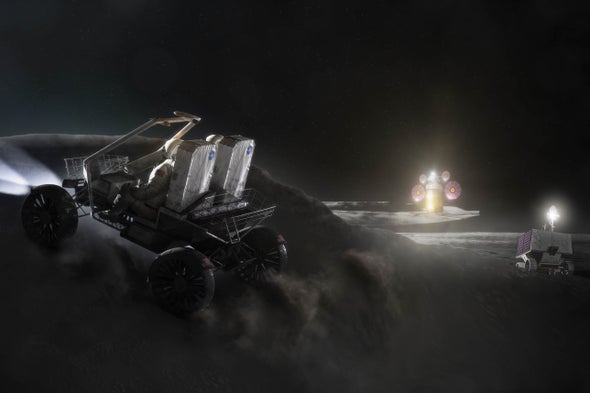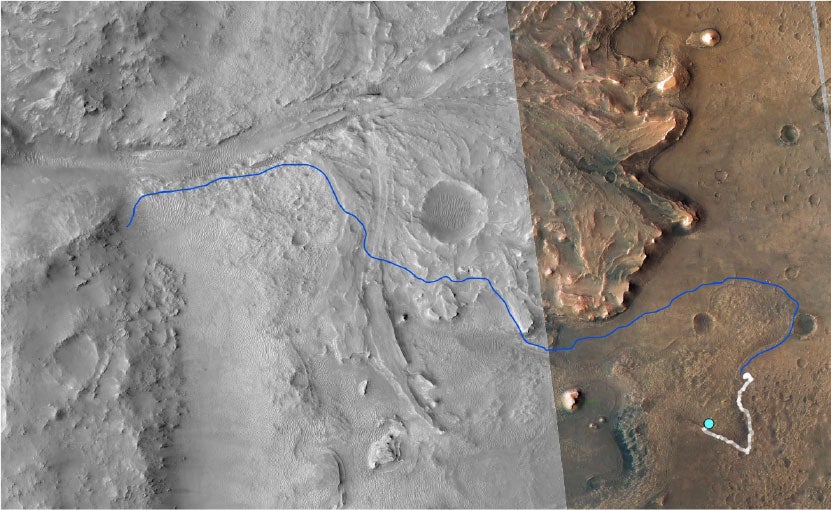Neuralink Monkeys Subjected to Extreme Suffering, Draft Complaint Says https://www.businessinsider.com/elon-musk-neuralink-experiments-monkeys-extreme-suffering-animal-rights-group-2022-2?r=US&IR=T
Day: 02/18/2022
Astronomers looked at 260,000 stars to find alien megastructures in the Milky Way
Astronomers looked at 260,000 stars to find alien megastructures in the Milky Way https://www.inverse.com/science/how-many-dyson-spheres-are-in-the-milky-way?utm_campaign=inverse&utm_content=1645196820&utm_medium=owned&utm_source=facebook
Discovery of New #HIV Variant Sends Warning for #COVID Pandemic.
Discovery of New HIV Variant Sends Warning for COVID Pandemic – Scientific American https://www.scientificamerican.com/article/discovery-of-new-hiv-variant-sends-warning-for-covid-pandemic/?utm_term=Autofeed&utm_medium=Social&utm_source=Facebook#Echobox=1645119372
Here is a list of countries that remain untouched by #Covid with zero cases so far
Here is a list of countries that remain untouched by Covid with zero cases so far https://www.wionews.com/world/here-is-a-list-of-countries-that-remain-untouched-by-covid-with-zero-cases-so-far-454502 Download the Wion News App now: http://onelink.to/jksrch -Shared via WION
How Olympic Figure Skaters Break Records with Physics
An exercise scientist explains the biomechanics behind jumps such as the quadruple Axel and what the body’s limits are

Today’s figure skaters are performing feats of athletic prowess that were unimaginable only a few decades ago. At the Winter Olympics in Beijing last week, U.S. skater Nathan Chen took home the gold with short program and free skate performances packed with quadruple jumps and triple Axels. And 15-year-old Russian skater Kamila Valieva became the first woman to land a quadruple jump—actually two—in Olympic competition in the mixed-gender team event. (According to news reports, Valieva has tested positive for a banned substance, the heart drug trimetazidine.) Quadruple jumps, or quads, involve launching off the ice, completing at least four revolutions in the air and landing on one foot. Such achievements require exquisite strength, speed and grace—but the physics behind them is fairly straightforward.*
Figure skating features roughly half a dozen types of jumps. They differ by which part of the skate’s blade one jumps off of (the front, also called the “toe pick,” or the inner or outer edge) and the number of revolutions made in the air (single, double, triple or quad). Toe jumps include the flip, lutz and toe loop. Edge jumps include the loop, Salchow and Axel.
Quad jumps—including quad Salchows and quad toe loops—have become common in the men’s competition (most of the top male skaters do them), and a number of women have landed them in competitions outside of the Olympics or in practice. The quadruple Axel is generally considered the most challenging jump because it requires a forward takeoff and four and a half rotations in the air. To date, no one of any gender has successfully completed a quad Axel in competition, although skaters such as Japan’s Yuzuru Hanyu have tried. And some experts think a quint—a quintuple, or five-revolution, jump—is theoretically within reach.ADVERTISEMENT
Deborah King, a professor of exercise science and athletic training at Ithaca College, studies the physics of figure skating. Scientific American spoke with her about how skaters perform these feats of agility, the physical boundaries of the sport and how today’s Olympic athletes are expanding them.
[An edited transcript of the interview follows.]
How did you get into studying figure skating?
I did my master’s in exercise science at the University of Massachusetts Amherst and didn’t really know what I wanted to do for a career after that, besides biomechanics in sports and exercise. There was a position open at the Olympic Training Center in Colorado Springs, Colo., in its sports science and technology division. When I was there, there was a figure skating camp. And one of the coaches that was there was really interested in studying the biomechanics of the triple Axel. So that pretty much launched my work into figure skating biomechanics—it was a really cool project. I had no experience with figure skating before that.
Can you explain the physics behind the main types of jumps?ADVERTISEMENT
Regardless of the figure skating technique that makes one jump different from the other, there are some basic physics that are common to all of them. From a pure mechanical standpoint, skaters, without a doubt, have to be in the air long enough to complete however many revolutions they’re trying to do. To get the time in the air for the jumps, that is related to jump height—and that is pretty much related to how much vertical velocity they can get when they jump off the ice. Depending on whether it’s a toe pick jump or an edge jump, the movement patterns they do to get that vertical velocity will differ.
For toe pick jumps, you’re sort of vaulting off the toe pick to pop up. And the edge jumps, it’s more like you extend your leg and maybe use your arms a little bit to get some of that vertical velocity. Particularly for the toe pick jumps, the horizontal velocity you have can be used to do more like a pole-vaulting-type motion. In that case, extra horizontal speed could be helpful to store more energy in your leg. You’re coming in with this sort of linear momentum, but as you rotate over the leg, that horizontal motion is actually now being redirected a little vertically. It’s called tangential velocity. So, certainly, horizontal velocity can be helpful for generating vertical velocity. Horizontal speed is probably not going to help as much for an edge jump—you’re mostly just pushing off and generally getting work out of your muscles.
Why are these jumps so difficult to perform?
Skaters have got two things that they need to do at once, which makes it really hard: They need to spring off the ice—that’s going to give them that vertical velocity for the height—and they need to start rotating really fast. As they’re pressing off the ice to go up into the air, they also need to be creating the torque [a type of rotational force] against the ice, which is going to give them rotational momentum. They need that rotation momentum so that when they come off the ice, they can pull into a really tight position and rotate really fast.
Is this like when one spins in an office chair and brings in their arms to spin faster?ADVERTISEMENT
Exactly, the actual physics behind that is: you’re reducing your moment of inertia, which increases your rotational velocity.
What do skaters need to do to complete more rotations during a jump?
To do quad jumps, compared with triple jumps, for most skaters, it comes down to rotational speed. From a theoretical standpoint, extra height will help. Skaters doing quads generally have higher jumps.
Is there a fundamental limit to how many spins a skater can do?
I absolutely think people could do quintuple jumps. But there is only so much strength a person can have—and power they can produce—as they jump off the ice to get so high. Even if you think of the vertical jump record at the [National Football League Scouting] Combine, people are not jumping two to three meters in the air. And you can only get so narrow. You’re limited by the breadth of your shoulders and hips—you can only get down to a certain minimum moment of inertia based on your specific anthropometry [body proportions].ADVERTISEMENT
The other factor where skaters could potentially improve—in order to do more rotations—would be rotational momentum as they come off the ice. As they do their approach or footwork into the takeoff, they create torque about the rotating axis as they push off the ice. If they can get more rotational momentum as they’re still exploding upward, then they can rotate faster with that small body position. It’s sort of like: if you’re on a tire swing, and someone pushes you harder, you’re going to rotate faster. So there are three things you can play with.
Skaters should be mathematically able to do a quint Salchow or toe loop. A quad Axel is, to me, probably the limit because it is 4.5 revolutions.
Do male skaters have an advantage over female ones when it comes to doing more rotations?
Generally, you’re seeing just the differences in muscle mass between male and female skaters. Obviously, there’s overlap, and the top end of the female skaters flow over into the male ones. But if you look at the bell curves of strength and power, you do have greater strength and power from most male skaters. Most of the male skaters are jumping a little higher than the female ones, and most of them are likely going to be able to generate more rotational momentum coming off the ice. You could [argue male skaters have] a disadvantage in that, generally speaking, they’re not going to be able to get as tight or as small a moment of inertia. So it can be harder for the guys because, generally, skaters tend to be petite.
Is there an optimal age for figure skating?ADVERTISEMENT
In terms of women, you see lot of skaters hitting their jumps before puberty. It can be particularly hard for female skaters when they go through puberty because changes in your body size and shape make you have to relearn your jumps. It also happens to men, but that’s probably more a result of a mismatch in growth spurts because the muscles have to keep up.
In the 1998 Winter Olympics in Nagano, Japan, French figure skater Surya Bonaly performed an impressive—and technically illegal—backflip on the ice. How did she achieve that?
It’s kind of the same basic physical principles as other jumps. The rotation’s about a different axis. As opposed to the vertical axis involved in most figure skating jumps, she was rotating about what lot of people call the flip, or the tumbling, axis. When you’re watching gymnasts, they go more head over heals. Some of same principles are involved—for example, you need to be high enough that your body rotates over [for one backflip]. Gymnasts do, like, double backflips. But you could not see, off of ice, a triple or quadruple backflip. Landing on ice is also difficult. If you come up short, it’s not a particularly forgiving surface.
Ouch, I can imagine. What impact—quite literally—do all these jumps have on the body?
We’re trying to look at the forces involved in landing. Not a lot of people have done that yet. There’s not a lot of ready-tailored equipment that can be attached to a skate. My colleagues at Brigham Young University and I instrumented a figure skating blade with sensors that would measure force. When we got it calibrated, COVID hit. So we haven’t actually measured the forces yet.
We have some ideas of how big we think the forces are. Most people would say the landings are somewhere between five to six times body weight, up to maybe 10 to 12 times body weight. And it’s all on one foot, too. It’s a lot of abuse on the same leg, over and over again, on a really hard surface. Skaters do have a lot of injuries. If you watch it on TV, it looks so graceful, easy and beautiful. But if you go to the edge of a rink while they’re practicing, you can hear the sound of the takeoffs and the landings, and you quickly get an impression of the magnitude of impact forces.
NASA Eyes Electric Car Tech for Future Moon Rovers
Space agencies are partnering with car manufacturers to custom build new rovers—or retrofit commercial vehicles—for future missions to the moon and Mars

Of the many “firsts” from NASA’s Apollo program of lunar exploration, one often overlooked is that the Apollo missions included the first—and so far only—times that humans have driven on another world. Presaging today’s eco-conscious market for carbon-neutral transportation, Apollo’s battery-powered lunar roving vehicles were all-electric as well. Astronaut David Scott, who was the first person to drive one on the moon during the Apollo 15 mission, remarked that the “moon buggy” vehicles were “about as optimum as you can build.” Astronauts used them in Apollo 16 and 17, too. During those missions, the vehicles traversed an average of just over 30 total kilometers of lunar terrain and reached a top speed of 18 kilometers per hour. These vehicles were considered disposable: each ran only for a matter of hours before being discarded on the moon at mission’s end.
Fast-forward to today, when NASA is once again aiming for astronauts on the moon: the space agency’s Artemis III mission is slated to ferry a crew to the vicinity of the lunar south pole as soon as 2025. But this time an Apollo-like moon buggy will not suffice. NASA’s plans call for Artemis’s first moonwalking astronauts to spend a week exploring the region around their landing site, which is intended to become a sort of base camp for future lunar forays. For those sorts of high-endurance operations, a suitably high-endurance vehicle would be desirable, too. Last August NASA said as much in a video announcing a request for information for a new lunar terrain vehicle. “This isn’t your grandfather’s moonbuggy,” read bold text in black and pink while an electric guitar vamped in the video, “but it might be his granddaughter’s”—an allusion to Artemis III’s goal of putting the first woman on the moon.
Importantly, the lunar terrain vehicle is just one member of the automotive fleet that will support Artemis’s astronauts. The Volatiles Investigating Polar Exploration Rover, (VIPER), another lunar rover, will not chauffeur people but instead will roam uncrewed around the moon’s south pole for 100 days in search of water ice. The agency is also considering a third vehicle—a pressurized “habitable mobility platform” that could transport crews for up to 45 days.
The crewed lunar terrain vehicle should be designed to last at least a decade, according to NASA’s requirements. It would support a bevy of one- and two-week missions, and it could even explore the surface of the moon autonomously between human visitations. Moreover, its design would set the standard for subsequent generations of surface vehicles built to support notional future human landings on Mars.
In response to those challenges, space agencies are drawing on the deep experience of commercial automobile manufacturers to design durable rovers from scratch. At least two partnerships have sprung up to vie for NASA’s next lunar terrain vehicle: One between General Motors and Lockheed Martin was announced last May. And another between Northrop Grumman, AVL, Intuitive Machines, Lunar Outpost and Michelin launched last November. Planetary scientists have even started to think beyond the moon: a recent Keck Institute for Space Studies workshop convened agency, academic and industry researchers to consider bolder ideas for the Martian surface, such as retrofitting a commercial electric vehicle for space use.
Across the Pacific, Japan is undertaking a parallel process. The Japan Aerospace Exploration Agency (JAXA) has partnered with Nissan and Toyota for two different lunar driving projects. In December Nissan unveiled an uncrewed lunar rover prototype that incorporates front and rear electric motors to navigate bumpy terrain. Toyota, meanwhile, is designing a crewed, pressurized lunar cruiser that is powered by hydrogen fuel cells and would ostensibly fill the same role as NASA’s habitable mobility platform. Toyota officials announced in January that, following the cruiser’s deployment to the moon, the company will work on adapting it for use on Mars.
“We’re converging on a point for planetary and commercial vehicles where we’re utilizing the same kinds of techniques to operate these vehicles, get them to drive autonomously and avoid obstacles,” says Paul Niles, a planetary scientist at NASA’s Johnson Space Center. “Certainly, automation would help, and that kind of [partnership] would be really synergistic.”ADVERTISEMENT
“EXTRATERRESTRIAL” MEANS “EXTRA DIFFICULT”
The moon and Mars present an overlapping set of difficulties for a reusable rover. The first step is simply getting there: although SpaceX hopes to greatly lower the cost of launches with Starship, the company’s in-development and purportedly fully reusable heavy-lift rocket, putting anything as big as a car into space remains a lofty investment. (Then again, SpaceX has already done that, too—and has whimsically teased what could be nascent plans to someday send a Tesla Cybertruck to Mars.)
Once deposited on either body, a vehicle would have to contend with unearthly extremes in temperature. Mars receives only about half as much of the sun’s warming radiance as Earth, and the Red Planet’s atmosphere is too tenuous to hold on to much heat, Niles says.
“On your worst day on top of Mount Everest, it’s like your warmest day on Mars,” he says. “While the rocks on the surface can actually get pretty warm, almost up to zero degree Celsius, the air is really cold.”
The situation on the moon is even more extreme. The moon rotates more slowly than Earth, making a lunar day last around 29.5 Earth days. This means a multiuse vehicle would have to survive a weeks-long lunar night—a feat that derailed China’s Yutu rover in 2014. Temperatures can reach a blistering 127 degrees C during lunar days, only to plunge to –173 degrees C during lunar nights. Furthermore, the moon’s lack of a heat-distributing atmosphere means that shadowed regions can become extremely cold, even during the long lunar day. For a rover to endure these extremes, it must somehow store energy and retain heat through the lunar night without access to solar power—but it must also avoid overheating when bathed in harsh sunlight for weeks at a time.
“Being able to survive that [lunar] night is absolutely critical, or you’re just throwing up disposable rovers at that point,” says Derek Hodgins, strategy and business lead of Lockheed Martin’s lunar exploration arm.ADVERTISEMENT
Another hurdle that a vehicle must surmount in space is radiation. Earth’s atmosphere and magnetic field act as shields against high-energy particles ejected by the sun and cosmic rays, each of which can degrade materials and damage delicate electronics. But neither the moon nor Mars offers similar protections. Surface rovers meant to operate there for years on end must include radiation-hardened electronics, as well as greater redundancies in the inevitable event of parts-based failures, says Jeff Nield, director of product and experience for global industrial design at General Motors.
Finally, the moon and Mars possess a much weaker gravitational field than Earth, which can subtly affect a vehicle’s operations. Less gravity may actually help an electric-powered vehicle carry burdens such as astronauts and travel farther than a similar car on Earth could with the same power supply. But the calibration and suspension of a rover on the moon or Mars would need to be adjusted for an altered center of gravity, says Bethany Ehlmann, a planetary scientist at the California Institute of Technology.
SOLUTIONS: FROM SCRATCH OR OUT OF A BOX?
The two partnerships designing lunar vehicles for NASA are undeterred by these challenges, enough so to develop their prototypes without the certainty of a contract with the agency. NASA has solicited multiple requests for information for the lunar terrain vehicle, but it has yet to release a formal request for proposal, which would signal its ability to foot the bill.
“There’s never been an 100 percent industry-led development of a human space system that has flown or held American astronauts,” Nield says, adding that the recently completed Commercial Crew Program received 7 percent of its funding from industry, with NASA picking up the remaining 93 percent of the multibillion-dollar tab.
GM and Lockheed Martin’s bet is probably not all that risky, though: According to Hodgins, the Apollo missions generated up to a 700 percent return on investment for industry partners, based on technology that was developed for space and applied to Earth. These included pumps for artificial hearts and some of the flame-resistant materials used in firefighting suits.ADVERTISEMENT
This time around, the translatable innovations may be related to autonomous driving and user ergonomics. Autonomous technology would allow a rover to scout potential landing sites, pre-position cargo and collect samples to prepare for or augment crewed missions. And designing a vehicle’s cabin to better accommodate spacesuit-clad passengers and crew would be essential. Improvements in both areas could cascade into consumer products on Earth in the form of better self-driving cars or vehicles with enhancements for users with limited mobility. The GM–Lockheed Martin rover, for instance, has a roomier, more astronaut-amenable interior where grab handles aid movement and glove-friendly buttons and switches take priority over touch pads.
But this sort of custom-built approach is only one solution to the space problem. Other researchers, Niles and Ehlmann among them, see potential for designs that simply use an existing consumer electric vehicle’s chassis and then retrofit it with adaptations needed for extraterrestrial operations. They both contributed to the workshop last March on revolutionizing access to Mars’s surface that was borne out in a Keck Institute for Space Studies report published this month. The report’s appendix concluded with a case study on the cost and process of adapting an off-the-shelf commercial electric vehicle for Mars.
In theory, if enough components remain untouched, the cost of revamping an existing vehicle would be much lower than designing one from scratch, says Ehlmann, who co-led the workshop.
Commercial electric cars have more features that would suit them for Mars in addition to their batteries and ability to function at low temperatures. Despite differences in atmospheric pressure on Earth and Mars, sealed and pressurized components of the cars would likely not be affected, according to the report. Additionally, commercial vehicles have gone through years of stress testing to be sold on the market, in contrast with rovers tailor-made for space.
Still, Ehlmann says the idea remains only a thought experiment. The report’s off-the-shelf approach, however, represents the sort of outside-the-box thinking that could hasten progress toward human voyages to Mars.ADVERTISEMENT
“There’s so much excitement about the science to be done,” she says. “It’s useful to think about missions not as one-offs but as a real commitment to have a U.S. presence on the moon and Mars, both robotically and one day in person.”
What We Learned from the Perseverance Rover’s First Year on Mars
Despite some unexpected challenges, team members are setting lofty goals for the rover in 2022

One year ago NASA’s Perseverance rover plunged through the Martian atmosphere and safely landed in Jezero Crater, a 45-kilometer-wide gouge that scientists suspect once hosted a deep, long-lived lake. The rover’s ultimate target is near Jezero’s western edge: a large, fan-shaped pile of sediments that washed into the basin through a notch in the crater rim about 3.5 billion years ago. In other words, the target is a river delta—the exact type of environment that could preserve signs of ancient Martian life-forms.
Perseverance is the tip of the spear in humanity’s grand quest to find traces of a relict Martian biosphere. The $2.7-billion mission’s overarching objective is to collect dozens of Martian rock samples, many of them from the delta. Then, sometime in the early 2030s, a sequence of spacecraft should return those samples to Earth for up-close scrutiny, possibly allowing scientists to at last answer the question of whether the solar system was ever home to more than one life-bearing world.
“Perhaps past microbial life could have existed on Mars when it was a little warmer and a little wetter,” says Lori Glaze, director of NASA’s planetary science division. “The surface of Mars—the geology, the geologic history—is preserved. We can see back 4.3 billion years on the surface…. You can’t do that other places.”ADVERTISEMENT
Stitched together from 16 images captured by NASA’s Perseverance rover, this video pans across a panoramic view of a portion of Jezero Crater, revealing brown hills in the middle distance that are part of the crater’s ancient river delta.
Perseverance’s early observations are already revealing that Jezero’s geologic history is richer than previously imagined, with dramatic shifts in environmental conditions. Now, as the rover ramps up its sample-collection campaign, scientists back home are eager to send it west, toward the alluring river delta and its potential biological treasure. Mars, however, does not always play by the rules. Already the planet has thrown a few unanticipated challenges into the rover’s first Earth year on the Martian surface.
“Every time we’ve sent a mission to Mars, we’ve had to learn more about how Mars actually is going to treat our spacecraft, and we have to learn how to operate in that environment,” Glaze says. But Perseverance is doing well, she adds. “Things are moving along at a really good clip. [The team is] making pretty great progress.”
EARLY SCIENCE OUTSIDE THE LANDING STRIP
Perseverance is not alone in celebrating its first Martian anniversary. It was one of three space missions to reach Mars last February. The United Arab Emirates’ Hope orbiter is still circling the planet. And China’s multicomponent Tianwen-1 mission—composed of an orbiter, a lander and a rover—is there, too. That mission’s rover, Zhurong, is currently exploring a Martian plain called Utopia Planitia, some 1,800 kilometers northeast of Perseverance’s location.ADVERTISEMENT
Back in Jezero Crater, however, Perseverance’s Martian adventures took an unexpected turn almost right away, starting with where the rover touched down on February 18, 2021.
“In all of the simulations that were done beforehand, the most likely place to land was a big, flat area that we started calling ‘the landing strip’ right in front of the delta—I mean, literally within 100 meters of the front of the delta,” says the California Institute of Technology’s Ken Farley, the mission’s project scientist. “So we were joking around that on February 19 we were going to wake up looking at a wall in front of us. And, um, we didn’t.”

As the rover descended to the surface, an onboard navigation system autonomously guided Perseverance to an area the software had deemed “safe”—which it was. But instead of landing within an Earth day’s drive of the delta, the rover ended up about 2.5 kilometers away, on the other side of a treacherous, sandy, rock-strewn terrain called Séítah, which is Navajo for “amid the sand.” Circumnavigating that patch would more than double the length of the rover’s path to its primary exploration target. Yet as Perseverance scouted its immediate surroundings, mission controllers chose to let it linger on the crater floor and explore Séítah before doubling back and heading to the delta.
“I worked on Curiosity ever since it landed in Gale Crater,” says Perseverance’s deputy project scientist Katie Stack Morgan of NASA’s Jet Propulsion Laboratory (JPL). “And [with] that very first image that we got down from Perseverance, I looked at that landscape and thought, ‘Wow, we are not in Gale Crater anymore.’ This is nothing like [what] I have ever seen in Gale.”
Instead of landing in lake sediments, the rover found itself on fractured bedrock littered with bizarre, sometimes dusty rocks. Many of those rocks are covered in an intriguing purplish coating that resembles desert varnishes on Earth—patinas associated with hardy, radiation-resistant types of terrestrial microbes. Initially, the rock textures and geochemistry defied classification. But once the rover had ground through the weathered surface of a Jezero rock, scientists, saw exactly what they would have expected in a lava flow—not a lake bottom.ADVERTISEMENT
“All of the rocks that we have confidently identified are igneous,” Farley says. “They have nothing to do with the lake.”
Produced volcanically, the igneous rocks on Jezero’s floor contain large olivine crystals that typically form near the bottoms of thick lava lakes and flows. Scientists still do not know how or when the rocks ended up in Jezero, but it is now clear that the surface Perseverance is rolling across is not the original crater floor. Further investigations revealed that the rocks have been altered by water, which excavated small tunnels and pockets in their interiors that are now filled with salty minerals. At least on Earth, such minerals are perfect for preserving signs of life. Their presence, plus the mysterious purple varnishes, makes these volcanic rocks unexpectedly tantalizing targets.
”Igneous rocks are typically not where you look to find signs of life because they come from really hot magmas that life doesn’t necessarily favor,” Stack Morgan says. “But when you have these rocks sitting on the surface or in the subsurface interacting with water, then you’re creating small niches within the rock itself that could be habitable. You’ve got chemical ingredients in there; you’ve got water in there; you’ve got precipitation of salt minerals.”
As Perseverance cast its gaze farther afield, it spied Jezero’s mountainous crater rim and the wall of the delta. (“We confirmed we do a have a delta, so check that box,” Stack Morgan says.) It also spotted a curious rocky outcrop called Kodiak, which team members have used to gauge the depth of Jezero’s ancient waters. Patterns on the rock suggest that on at least one occasion, water levels dipped surprisingly low, falling to more than 100 meters below an outflow channel to the east. Other observations provide hints of a deluge that gushed into the crater with enough power to carry along the large boulders now haphazardly strewn in some areas. In other words, Jezero’s lake was occasionally stable and placid and at other times flushed by periods of intense runoff.

And oddly, Jezero appears to be much windier than anticipated. Fortunately, that has not bothered Perseverance’s robot friend, the helicopter named Ingenuity. Since April 2021 Ingenuity has been performing well—so well, in fact, that after its initial tests, the team began using it to help guide the rover through tricky terrains such as Séítah. “It aced those tests,” Farley says. “Now it is our companion, and it is continuing to fly and do recon for us.”ADVERTISEMENT
GO WEST, YOUNG ROVER
Collecting and storing samples has also turned out to be trickier than anticipated. Last August, when Perseverance took its first shot at collecting a rock core, mission personnel were optimistic. They had tested the machinery on terrestrial rocks and performed extensive troubleshooting on the software guiding the process. The target rock showed no obvious challenging quirks. The task should have been easy.
But the first coring tube was devastatingly empty. “To come up with a zero-volume empty tube was just mind-blowing, unfortunately,” says JPL’s Jessica Samuels, sample caching system lead for the mission. “That was never something we were worried about—not acquiring the sample. We were worried about so many other things.”
The rock, it turned out, had been so altered by water that it crumbled under the pressure of Perseverance’s drill—not an ideal result but one that left the team with a useful tube full of Martian atmosphere. That first sample failure was stressful, however, and if the problems continued, they could have scuttled the once-in-a-lifetime chance to gather and return pristine material from Mars.

Since then the team has regrouped and successfully collected six rock cores, which Samuels says is validation that the system actually works as planned. “It’s not us. It’s Mars,” she says. Indeed, Mars served up another episode of sample-collecting shenanigans when pebbles recently wedged themselves into the rover’s sample-caching hardware and Perseverance had to do a bit of a shimmy to shake them loose.
“There’s never a dull moment in sampling,” Samuels says. “It’s keeping us on our toes. And it’s keeping us continuing to think about the different environmental conditions.”ADVERTISEMENT
Overall retrieving a small cache of samples from Mars is an audacious task that is just barely within our technological grasp, even if each of the mission’s moving parts performs perfectly. “We’re pushing the limits of the technology we have today to land and launch a rocket from Mars that is essentially just big enough to get a basketball into orbit,” says Albert Haldemann, chief Mars engineer at the European Space Agency, a partner in the overall sample-return effort.
Perseverance’s already-collected igneous rock cores can be used to measure the strength of Mars’s ancient magnetic field and to precisely pin ages on the crater’s epochs. For now, scientists guess that water sloshed around in Jezero around 3.5 billion years ago, but Farley says there are half a billion years of uncertainty in that estimate. Soon, team members say, they will begin deciding when and where Perseverance should deposit a preliminary cache of materials—just in case the rover is no longer functioning by the time the next spacecraft arrives to retrieve its bounty.
“If everything is onboard Perseverance, and Perseverance dies unexpectedly, we’ve got nothing,” Haldemann says. “So a safety cache will be put down at a potential landing spot—sooner rather than later.”
Before it leaves the crater floor, Perseverance will fill two more of its 43 onboard, ultraclean sample tubes. Then it will turn west and make haste: “We’re gonna gun it for the delta,” Stack Morgan says.
5 Things You Should Know About Epilepsy
How much do you know about epilepsy? Get the facts!
Epilepsy is a brain disorder that causes repeated seizures. There are many different types of epilepsy and many different kinds of seizures. Epilepsy can get in the way of life, especially when seizures keep happening. To control their seizures, people with epilepsy may take medicine, have surgery, use devices, or follow a special diet.
Here’s what you need to know:
#1 Epilepsy is common.
In fact, you probably know a few people with epilepsy. In 2015, about 3 million adults (age 18 and older) and 470,000 children (age 17 years or younger) had active epilepsy in the United States.1 That’s about 3.4 million people, which is about the same number of people living in Delaware, New Hampshire, and Rhode Island combined. 2
#2 Seizures may look different than you expect.
What comes to mind when you think of a seizure? In the movies and on TV, they often show a person falling to the ground, shaking, and becoming unaware of what’s going on around them. That’s one kind of seizure, but it’s not the most common. More often, a person having a seizure may seem confused, stare into space, wander, make unusual movements, or be unable to answer questions or talk. Sometimes it’s hard to tell when a person is having a seizure, so it’s important to learn how to recognize different types of seizures.
Seizures might not look like you’d expect. Learn to spot the signs of seizures and how to help.
#3 Seizure first aid is easy to give.
About 1 in 10 people may have a seizure during their lifetime.3 Because seizures are common, you may need to help someone one day. First aid for seizures involves keeping the person safe until the seizure stops on its own and knowing when to call 911 for emergency help.
Professionals such as school nurses and other school staff, law enforcement, first responders, and childcare workers should also understand epilepsy and how to offer first aid. CDC supports free training programs for these groups through a partnership with the Epilepsy Foundation.
#4 People with epilepsy can lead full lives.
Most people with epilepsy can do the same things as those without epilepsy. There are many successful people with epilepsy who work in medicine, sports, entertainment, government, and other professions.
People with uncontrolled seizures or severe types of epilepsy face more challenges and may find it harder to work or go to school regularly. Some adults with epilepsy have a hard time finding jobs, transportation, and affordable health care. Learn about resources that can help on CDC’s Find Support page.
#5 Some causes of epilepsy are preventable.

People with epilepsy need others to understand their condition. Get the facts!
Epilepsy can be caused by different conditions that affect a person’s brain. Many times, doctors don’t know the cause. Traumatic brain injuries, stroke, certain infections (such as cysticercosis, the leading cause of epilepsy worldwide), lack of oxygen during birth, and some birth defects are examples of preventable causes of epilepsy. Learn more about preventing epilepsy and reducing your risk.
More Information
References
- Zack MM, Kobau R. National and state estimates of the numbers of adults and children with active epilepsy — United States, 2015. MMWR Morb Mortal Wkly Rep. 2017;66:821–825. DOI: 10.15585/mmwr.mm6631a1.html
- United States Census Bureau. Annual Estimates of the Resident Population for the United States, Regions, States, and Puerto Rico: April 1, 2020 to July 1, 2021.external icon Accessed January 26, 2022.
- Hauser WA, Annegers JF, Rocca WA. Descriptive epidemiology of epilepsy: Contributions of population-based studies from Rochester, Minnesota. Mayo Clin Proc. 1996;71(6):576-86. doi:10.4065/71.6.576
Motion Sickness
CDC recommends making sure you are up to date with your COVID-19 vaccines before travel, which includes additional doses for individuals who are immunocompromised or booster doses when eligible. Follow all requirements and recommendations at each location during travel, including wearing a well-fitting mask and following recommendations for protecting yourself and others. If you are traveling internationally, check the COVID-19 Travel Health Notice for your destination and visit the International Travel webpage for requirements and recommendations.

Motion sickness happens when the movement you see is different from what your inner ear senses. This can cause dizziness, nausea, and vomiting. You can get motion sick in a car, or on a train, airplane, boat, or amusement park ride. Motion sickness can make traveling unpleasant, but there are strategies to prevent and treat it.
Preventing motion sickness without medicine
Avoiding situations that cause motion sickness is the best way to prevent it, but that is not always possible when you are traveling. The following strategies can help you avoid or lessen motion sickness.
- Sit in the front of a car or bus.
- Choose a window seat on flights and trains.
- If possible, try lying down, shutting your eyes, sleeping, or looking at the horizon.
- Stay hydrated by drinking water. Limit alcoholic and caffeinated beverages.
- Eat small amounts of food frequently.
- Avoid smoking. Even stopping for a short period of time helps.
- Try and distract yourself with activities, such as listening to music.
- Use flavored lozenges, such as ginger candy.
Using medicines for motion sickness
Medicines can be used to prevent or treat motion sickness, although many of them cause drowsiness. Talk to a healthcare professional to decide if you should take medicines for motion sickness. Commonly used medicines are diphenhydramine (Benadryl), dimenhydrinate (Dramamine), and scopolamine.
Special Consideration for Children

Motion sickness is more common in children ages 2 to 12 years old.
Some medicines used to prevent or treat motion sickness are not recommended for children. Talk to your healthcare professional about medicines and correct dosing of medicines for motion sickness for children. Only give the recommended dosage.
Although motion sickness medicines can make people sleepy, it can have the opposite effect for some children, causing them to be very active. Ask your doctor if you should give your child a test dose before traveling.
Be a Heart-Health Role Model
Sharing is caring, but not when it comes to serious health conditions like diabetes or heart disease. These health conditions, like many others, can run in families. But there’s a lot you can do to help protect yourself and your family. Learn tips on how to be a heart-health role model for your family.
Heart disease is one of the most common complications of diabetes. And the longer you have diabetes, the more likely you are to develop heart disease. Recent studies show that people are developing type 2 diabetes at a much younger age, which means they will be affected by diabetes over a longer time and are at risk of developing diabetes complications like heart disease sooner.
If you have diabetes, you know how important healthy habits are to helping you manage the condition and prevent or delay complications like heart disease. And it’s not practical to have a different lifestyle than the rest of your family. So, what’s the key to being a heart-healthy role model? Getting your family involved! By showing your family how you’re taking steps to a healthy lifestyle, you’ll be a role model they can follow. Here are a few tips on how to be a heart-health role model for your family.

Share Your Family Health History
Like diabetes, heart disease can run in families. Having a family member with diabetes or heart disease increases your risk and the risk for others in your family. Talking about your family’s health history doesn’t only have to be a serious sit-down conversation. You can use family gatherings, mealtimes, or even coffee chats as a time to talk about your health history. You’ll want to:
- Ask questions. Asking your relatives about which health conditions they have had and when they were diagnosed can help you find out about your risk.
- Record and update information. Write down the information you collect and remember to update it as you learn more.
- Share with other family members. Sharing your family’s health history will benefit all members of your family, and it’s especially important to share this information with your younger relatives so that they can take steps now to prevent or delay heart disease.
Gathering family health history is just the first step. The next step is to act on it. Share the information at medical appointments so your doctor can decide which screening tests you need and when you’ll need them. Identifying and treating diabetes, heart disease, and other chronic conditions early can often mean better health in the long run. By starting the conversation and sharing your family’s health history, everyone can take steps to lower their risk.
Get Moving With Your Family
Of course you can’t change your genes, but there are lifestyle changes you and your family can make to lower the risk of heart disease. Being active with your family is a great way to lead by example. If the kids in your family see you enjoying physical activity, they’ll be more likely to give it a try.
Ask the people in your family what they like to do to be active, and build your family physical activities around those. Here are a few fun ways to get started.
- Go for a walk. You don’t have to do intense workouts to reap the benefits of physical activity. Walking is a great way to get exercise and spend time with your family.
- Try hula hooping. Did you know hula hooping is excellent exercise? It’s a lot of fun and it’s great for the whole family, even grandma and grandpa.
- Go for a bike ride. If you have knee or hip problems, bike riding is a great non-impact exercise. Kids love riding bikes too! Don’t forget to wear a helmet.
- Dance. Turn family time into dance time. Dancing is a great way to burn calories and get your heart pumping. Whether it’s just two to tango or a family group for your dance troupe, you’ll be dancing your way toward a healthier you.
Share Family Meals
Work, school, and other life responsibilities can make it hard to come together for mealtimes, but there are real benefits to sharing meals with loved ones. Sharing family meals is not only a great opportunity to pass on healthy eating habits, it’s also been shown to decrease family stress and help kids do better in school. Teaching the younger ones in your family the importance of eating together may encourage them to pass this value on to their kids later. Here are some tips for planning family meals:
- Keep it simple. Mealtime doesn’t have to be an elaborate event. Keep recipes simple and enjoyable for the whole family.
- Get the family involved. Let kids help with planning meals, creating shopping lists, cooking, setting the table, and cleaning up.
- Make mealtime screen-free. Make it a rule that phones and devices should be off or on mute and out of reach. This allows everyone to actively listen and be involved in the conversation.
At the Heart of It All
Being a heart-healthy role model involves knowing your risk, making healthy lifestyle choices, and taking steps to reduce the chance of getting heart disease. Managing diabetes is challenging even without having to manage a diabetes complication like heart disease. The good news is that you can do a lot to stay healthy and protect your heart—and the hearts of those you love.